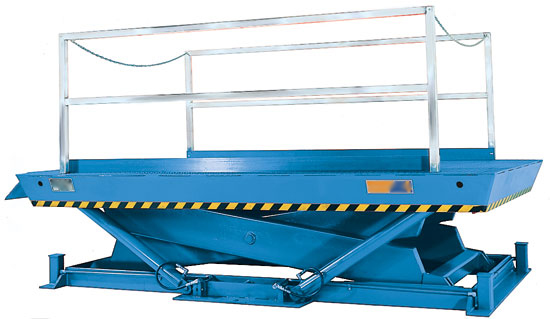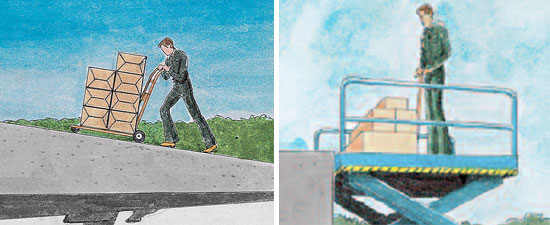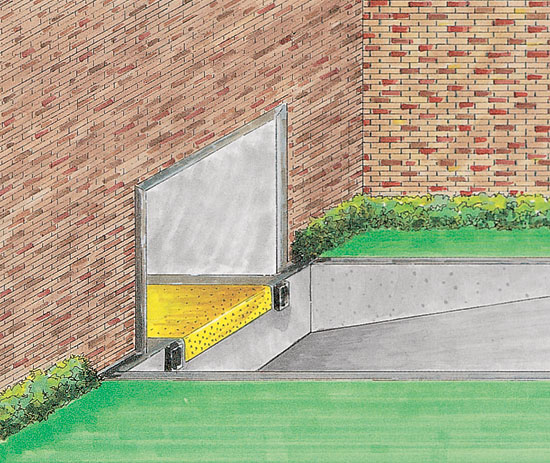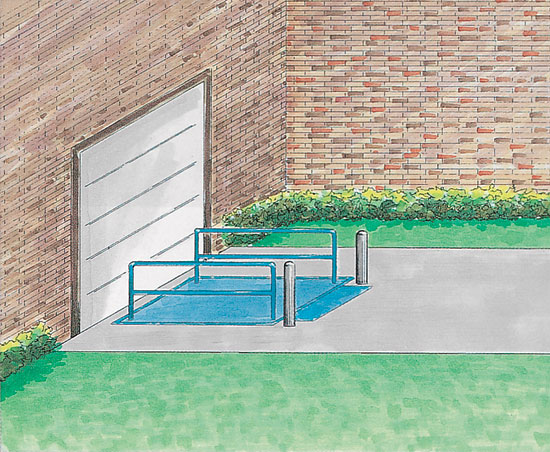Specifying a Safe Dock Lift
Learning Objectives:
- Identify the comparative advantages of using a dock lift to move goods from one level to another.
- Describe the different factors to be considered when specifying a dock lift.
- Explain how undersizing a dock lift creates a potentially dangerous situation.
- Evaluate different types of dock lifts on the market in terms of how they meet a building’s loading and unloading requirements.
Credits:
Specifying an appropriate dock lift is not going to earn a design award. But specifying the wrong dock lift may add thousands of dollars in reconstruction costs, create injury-prone situations and result in a painful round of embarrassed finger pointing that will ultimately reflect on the design firm’s credibility. One instance, where a new dock lift for a museum was too small to unload large artwork, did just that.
As one of the last details to be attended to, some designers when pressed for time, might simply reach for the most recent job that needed a dock lift and copy specifications without checking the requirements of the current project or consulting with a dock lift manufacturer. This can result in oversized, more expensive or, more usually, undersized dangerous equipment. Writing correct specifications for the right dock lift is therefore critical, as is remembering to include dock and loading facilities in the first place. (One university art gallery on the East Coast is unable to exhibit large sculptures because the design team neglected both dock and access service doors.)
What Are Dock Lifts?
Dock lifts are a type of scissors lift with a large platform. They are used primarily to unload material from trucks and transfer it to a dock or to the ground. Their vertical range of travel is generally just under 5 ft. Dock lifts are used for any loading dock situation. They are installed outside a building, inside a building, in basements and even in upper floors. They are used in healthcare facilities, hospitals, office buildings, postal facilities, retail stores, schools, restaurants, supermarkets, manufacturing plants, museums, high-rise apartment buildings and anywhere that trucks arrive to be loaded or unloaded. A dock lift is needed if a building has no dock, or if the dock is too high or too low for material to be wheeled directly into a building. They are the only type of equipment that can reach from ground level to all sizes of trucks ranging from low-step vans to large refrigerated trucks. There is no vehicle size that dock lifts cannot service.

Photo courtesy of Advance Lifts®
A large-size dock lift can service any height of vehicle and is sized to handle any mobile material handling equipment.

Drawings courtesy of Advance Lifts®
Concrete ramps used for unloading goods take up valuable real estate, are often steep and have safety issues (left). A dock lift (right) allows goods to be moved on the level.


Drawings courtesy of Advance Lifts®
Truck wells (top) accumulate snow, water and trash, are expensive to install and serve only a single height truck. A dock lift (bottom) “disappears” when closed.









